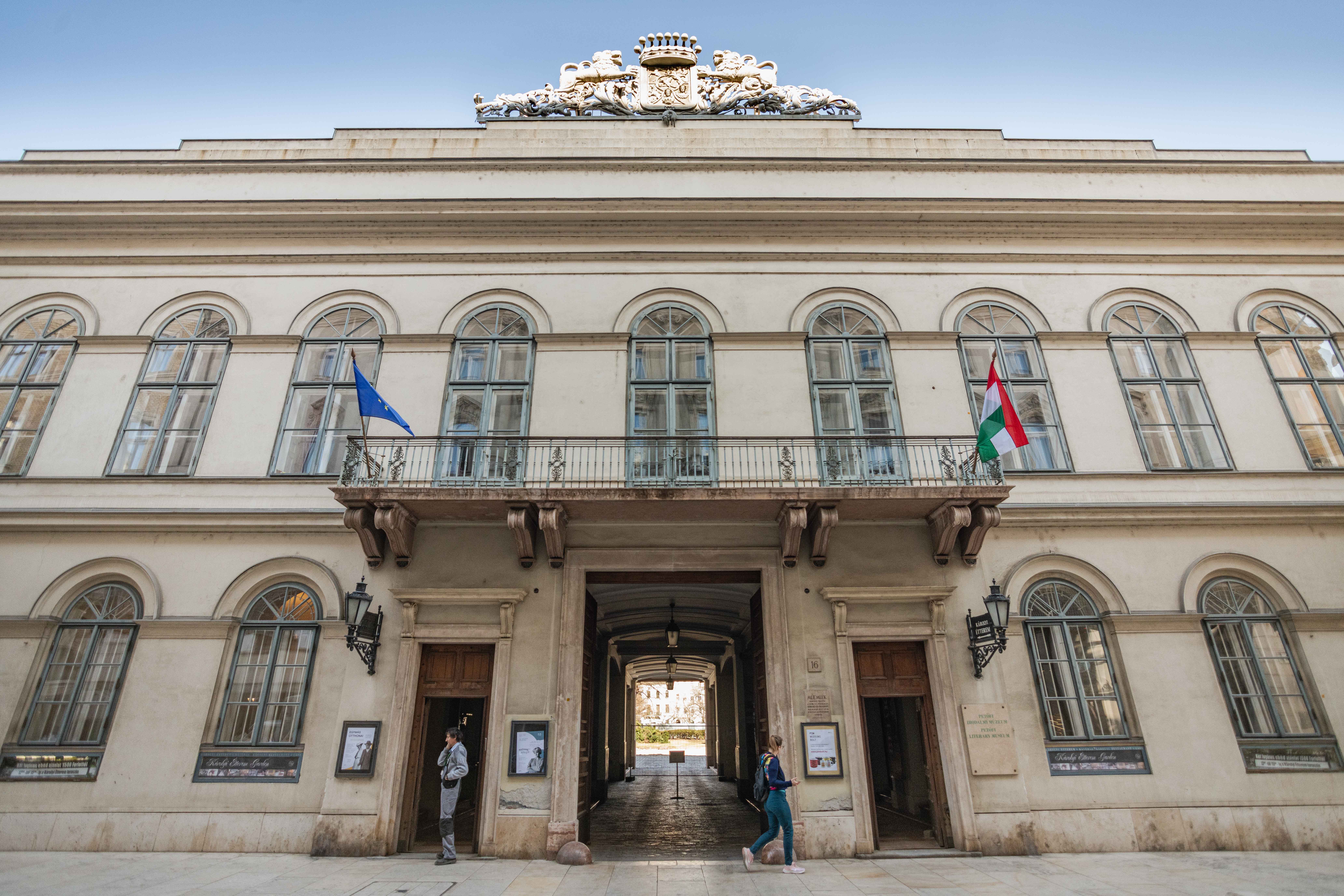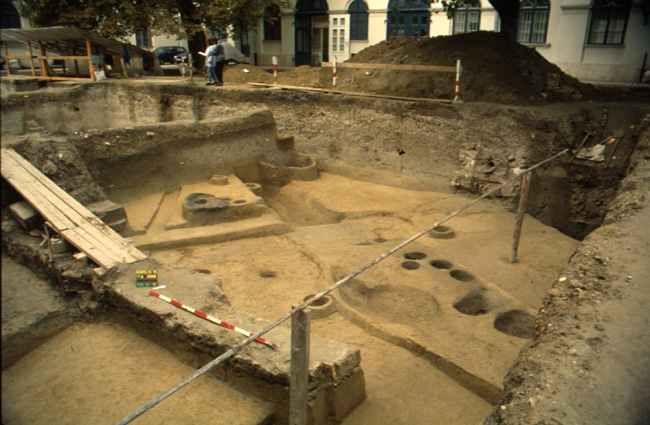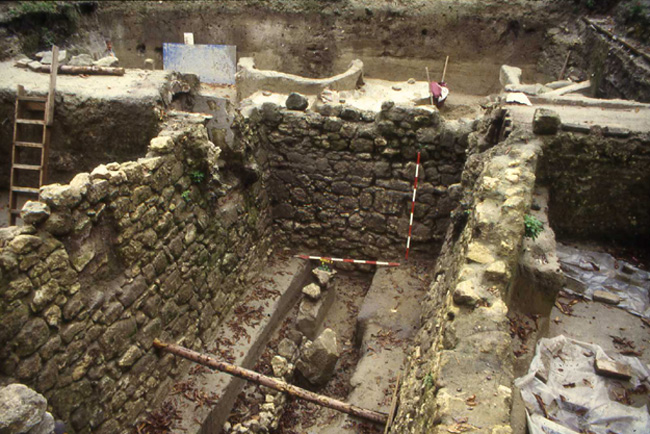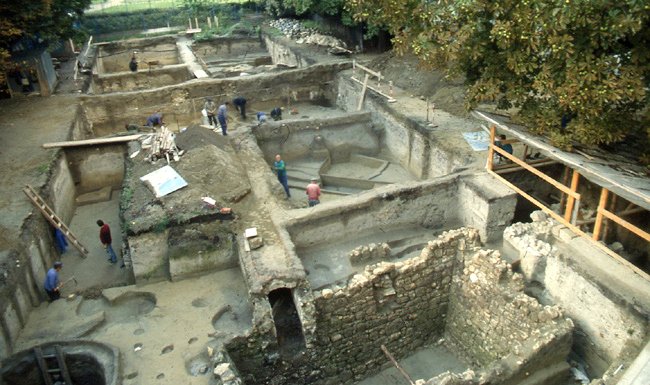After almost a quarter of a century, the archaeological research of the courtyard of the Károlyi Palace continues, reports the website of the Budapest History Museum, the archeology portal regeszet.aquincum.hu. Excavation is currently being carried out in the southeastern part of the yard, and a summary of the previous excavation was published.

The archaeological excavation is taking place in the courtyard of the Károlyi Palace, at 16 Károlyi street(Photo: Róbert Juharos/pestbuda.hu)
The article written by Judit Zádor, a retired archaeologist of the BTM, reveals that in the middle lane of the courtyard of the Károlyi Palace at 16 Károlyi street, 5th District, a sounding excavation was carried out in 1997, and a full excavation in 1998. During the research, the remains of the stone cellar and food storage of a Turkish house, part of a 13th century village, 23 graves of the 11th-12th century cemetery, as well as the modern remains of the baroque palace that once stood here were found.
From the text, we can learn that the area of the palace dates back to the 13th century, it belonged to the well-known village of Szent Erzsébet (Szentfalva), whose center may have been around the University Square. From the time of the first, early settlement, the remains of a house with a clay clapboard frame were found, and the 2-3 meter wide ditch system surrounding the village was also excavated, the depth of the ditch was one meter on average.

Árpád-era ditch system with pile holes (Photo: regeszet.aquincum.hu)
In the second period of the village, the trenches were buried, the eastern and western ends of the area were closed with a fence made of piles, the author writes. From this period, the remains of wooden-frame buildings, storage pits, furnaces and hearths serving domestic and industrial functions have come to light.
During the archaeological excavations, it was revealed that a previously abandoned cemetery lay beneath the village of Szent Erzsébet. The graves of 23 people were excavated here, the graves of 15 adults and 8 children were located at a depth of 220-240 centimeters, with the exception of one, they were oriented to the east in accordance with medieval customs, the archeology website said.
According to the article, the anthropological studies also revealed that the average age of the deceased (excluding infants) was 35 years, their height was 150-160 centimeters, and with one exception, they were of the Europid type. From the extremely poor cemetery - only one bronze and one silver "S"-ended hair hoop were found - the author concluded that they were the graves of a poor cemetery of the 11th-12th century were excavated.

Turkish cellar (Photo: regeszet.aquincum.hu)
The archeology portal also reports that on the western side of the courtyard of the Károlyi Palace, under the modern stone pavement, the ascending walls of the basement of a Turkish-era building, as well as a Turkish food store, were found. On its southern side, traces of the expiration date remained, and pile holes were also found.
From the text, we can learn that the Turkish storage pit was extremely rich in finds, glazed jugs with clay spouts, unglazed water jugs, green glazed bowls, mugs with handles were found here. Food remains and plant seeds remained in the pots. In addition to domestic ceramics, animal bones, among others, sheep and goat skulls were found in the pit. A Venetian glass bowl decorated with white fiberglass and a bronze vessel with a handle were the outstanding pieces of the collection.
During the excavations, it was also revealed that the baroque palace previously standing here had received several cannon hits, as evidenced by the two cannonballs discovered in its southern wall. It has been proven that the building burned down during the battles that took place in 1602-1603, and its inhabitants abandoned it for good - we can read on the archeology website.
" The results of research carried out in the courtyard of the Károlyi Palace almost a quarter of a century ago and started again today enrich the medieval and Turkish history of Pest with new and interesting data," said archaeologist Judit Zádor at the end of his report.
The full article can be read here.
Source: regeszet.aquincum.hu
Cover photo: Archaeologists unearthed centuries of memories in the courtyard of the Károlyi Palace (Photo: regeszet.aquincum.hu)






































Hozzászólások
Log in or register to comment!
Login Registration